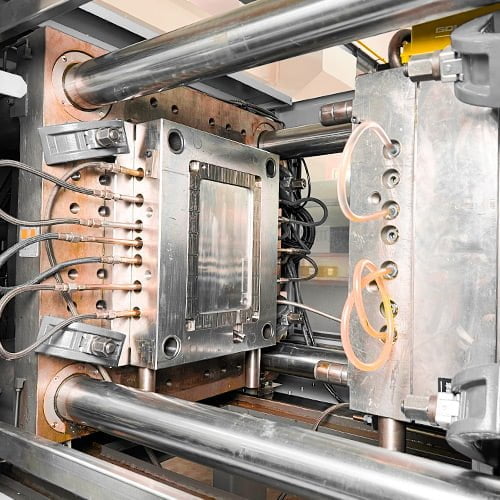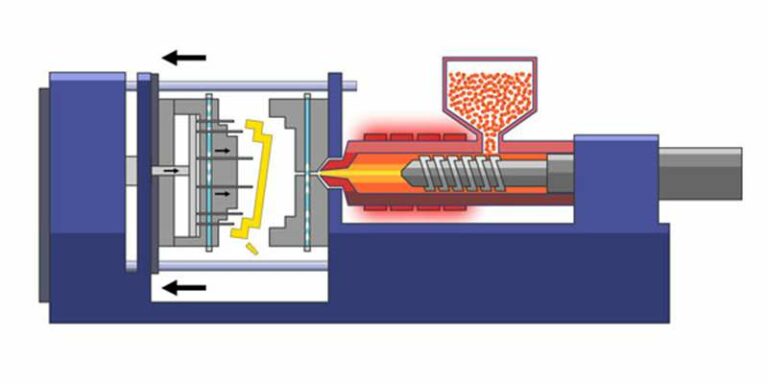A Comprehensive Overview to the Plastic Shot Molding Modern Technology
Plastic shot molding stands as a cornerstone of modern manufacturing, providing unmatched efficiency and accuracy in the production of complex plastic components. As the landscape of making develops, recognizing the future trajectory of injection molding comes to be increasingly imperative.

Introduction of Plastic Shot Molding
Plastic injection molding is an extensively made use of production procedure that enables the efficient manufacturing of complex plastic get rid of high precision. This innovation has ended up being a foundation in different sectors, consisting of automotive, durable goods, and electronics, owing to its capacity to generate huge quantities of components rapidly and cost-effectively.
The procedure includes melting plastic granules and injecting the molten material into a pre-designed mold. Once cooled down, the mold and mildew is gotten rid of to expose the completed component, characterized by its detailed information and harmony. The flexibility of materials used in plastic injection molding, varying from thermoplastics to thermosetting polymers, allows makers to customize items to fulfill particular needs, such as resistance, flexibility, and stamina to warm or chemicals.
In addition, the efficiency of this technique reduces waste and lessens manufacturing prices, making it an eye-catching choice for organizations aiming to maximize their manufacturing procedures. As innovation advancements, technologies such as multi-material injection molding and the integration of automation remain to enhance the capacities of plastic injection molding, making it possible for the creation of significantly sophisticated products that fulfill the demands of modern-day markets.
The Injection Molding Process
Shot molding is a sophisticated manufacturing method that involves a number of critical steps to change raw plastic materials into finished items. The process begins with the preparation of plastic pellets, which are fed right into a heated barrel. Here, the pellets are melted and co-opted to attain an uniform viscosity.
As soon as effectively heated, the liquified plastic is injected into a specifically crafted mold under high pressure. This step is critical, as it allows the material to fill up every dental caries of the mold, guaranteeing the last item accurately reflects the designated layout. The shot time must be thoroughly managed to protect against problems and ensure efficient material use.
After the mold is filled up, it goes through a cooling stage, where the plastic strengthens right into its last form. This cooling procedure can differ in period depending on the thickness and intricacy of the part. Once cooled, the mold opens, and the finished product is expelled.
Trick Advantages of This Innovation
One of the most considerable advantages of injection molding technology hinges on its ability to produce high quantities of regular and specific get rid of minimal waste. This effectiveness stems from the automated nature of the procedure, which significantly lowers hand-operated labor and the possibility for human error. Therefore, producers can achieve a high degree of repeatability in their result, making certain that each part satisfies strict quality criteria.
One more secret benefit is the convenience of products that can be utilized in injection molding. A vast array of thermoplastics and thermosetting polymers can be built, enabling for customized homes to suit details applications. Moreover, the innovation sustains elaborate layouts and complicated geometries, which can be challenging to attain with other manufacturing techniques.
The preliminary financial investment in mold and mildews may be high, however the lasting financial savings in material waste and labor make shot molding a financially practical option. These benefits strengthen injection molding's setting as a favored production procedure throughout numerous industries - Plastic Injection Molding.
Applications Throughout Industries

In the medical area, shot molding is important for manufacturing high-quality, sterilized components, consisting of syringes, medical instruments, and housings for medical devices. The capacity to preserve limited tolerances and create complex geometries makes it an ideal option for these applications. The packaging industry advantages from shot molding by generating a broad array of containers, closures, and dispensers that are both efficient and affordable.
The toy market depends greatly on injection molding to produce vibrant, sturdy, and safe products that appeal to kids. The construction market uses injection molding for creating different fixtures, installations, and components that official website contribute to both functionality and design. In general, the broad variety of applications shows the integral role of injection molding technology ahead of like this time various sectors.
Future Trends in Injection Molding
Embracing developments in technology, the future of injection molding is positioned for substantial makeover driven by technologies in products, automation, and lasting methods. Among one of the most significant patterns is the advancement of bio-based and recycled polymers, which not only lower reliance on nonrenewable fuel sources but likewise lessen ecological impact. As manufacturers increasingly focus on eco-friendly remedies, these products are ending up being more widespread in manufacturing.
Automation is another vital trend forming the market. The assimilation of robotics and man-made intelligence into the injection molding process boosts manufacturing, efficiency, and accuracy speed. Smart manufacturing facilities equipped with IoT gadgets permit for real-time tracking and anticipating upkeep, decreasing downtime and optimizing operational procedures.
In addition, the shift towards tailored and small-batch production is acquiring energy. Advanced modern technologies such as 3D printing and additive production make it possible for rapid prototyping and the development of intricate geometries that were previously unattainable. This shift enables firms to react much more successfully to market needs and consumer preferences.
Final Thought
In verdict, plastic shot molding modern technology represents a foundation of modern-day production, supplying efficiency and versatility in creating complicated components throughout varied sectors. The thorough examination of the injection molding process highlights its crucial phases and advantages, while the exploration of applications underscores its widespread relevance. Emerging trends, including sustainability and automation, indicate an encouraging future for this modern technology. Website Proceeded innovations are most likely to improve production abilities and environmental considerations, forming the landscape of production.
Plastic shot molding stands as a keystone of modern-day manufacturing, offering unrivaled efficiency and accuracy in the production of facility plastic components (Plastic Injection Molding). The adaptability of products used in plastic shot molding, varying from thermoplastics to thermosetting polymers, allows makers to tailor items to fulfill particular needs, such as strength, resistance, and versatility to heat or chemicals
Injection molding is a sophisticated manufacturing strategy that includes several critical steps to change raw plastic materials into completed items.The flexibility and performance of injection molding innovation have actually led to its extensive adoption throughout countless markets.In verdict, plastic shot molding technology stands for a keystone of modern manufacturing, using effectiveness and convenience in producing complicated components throughout varied industries.